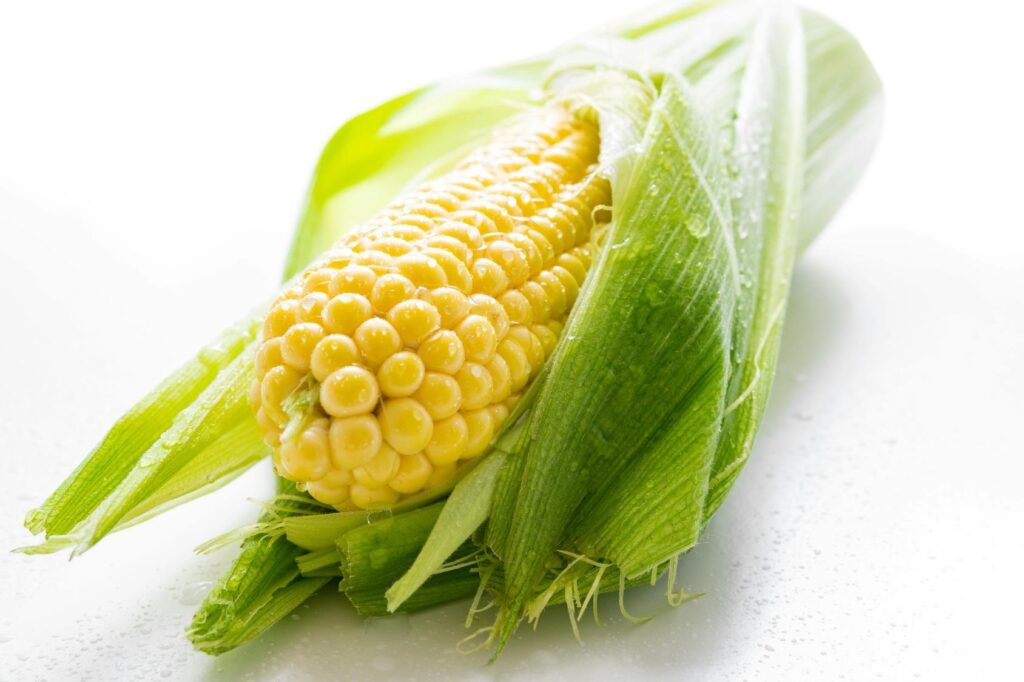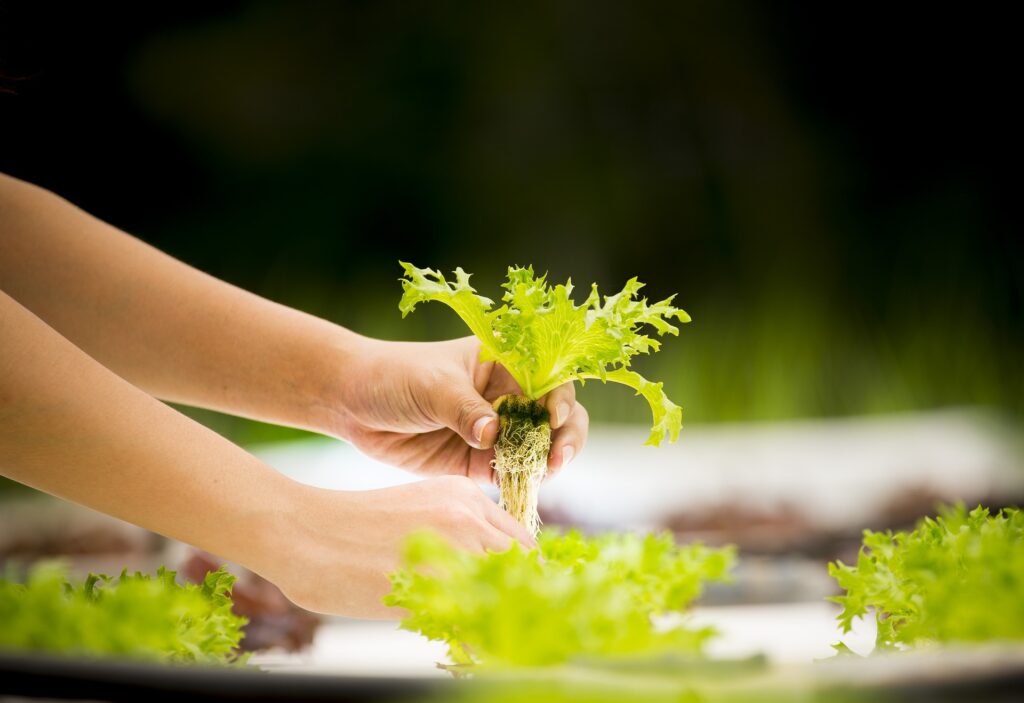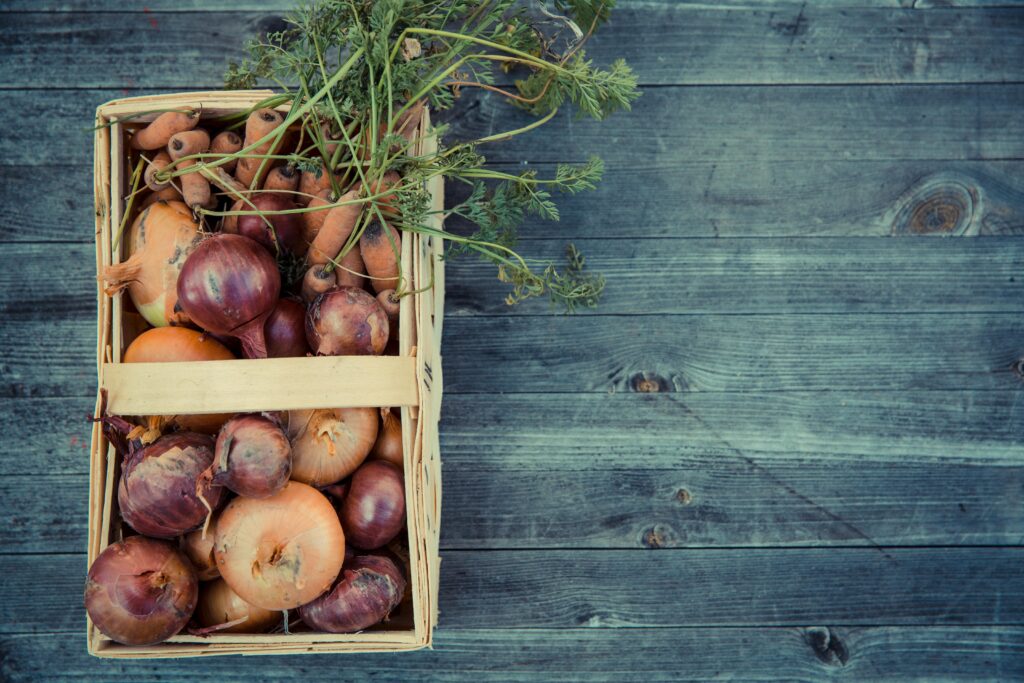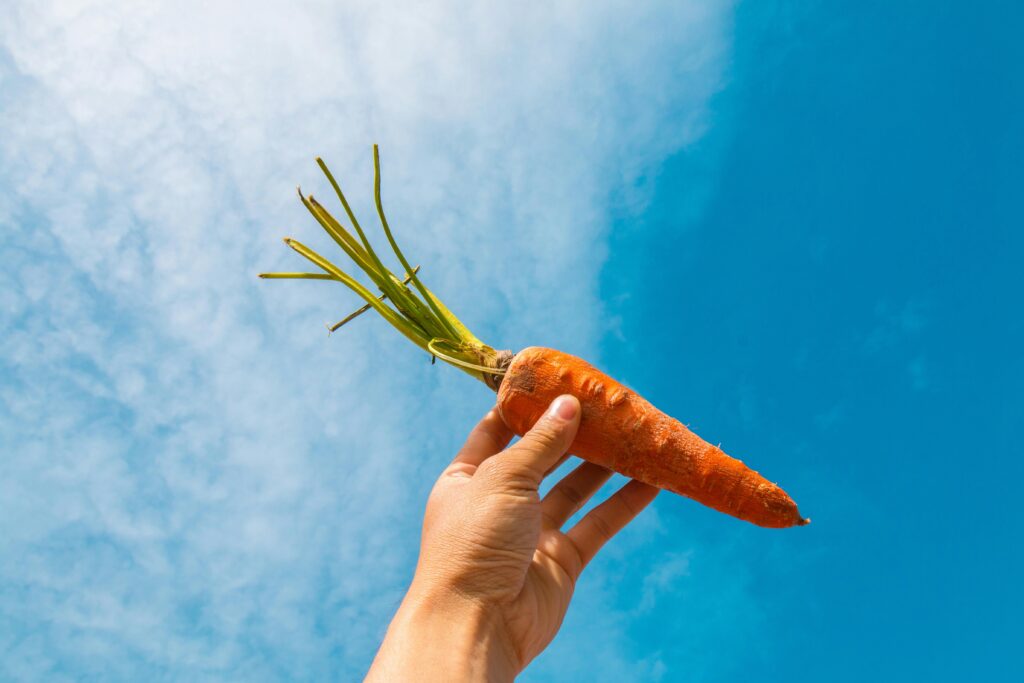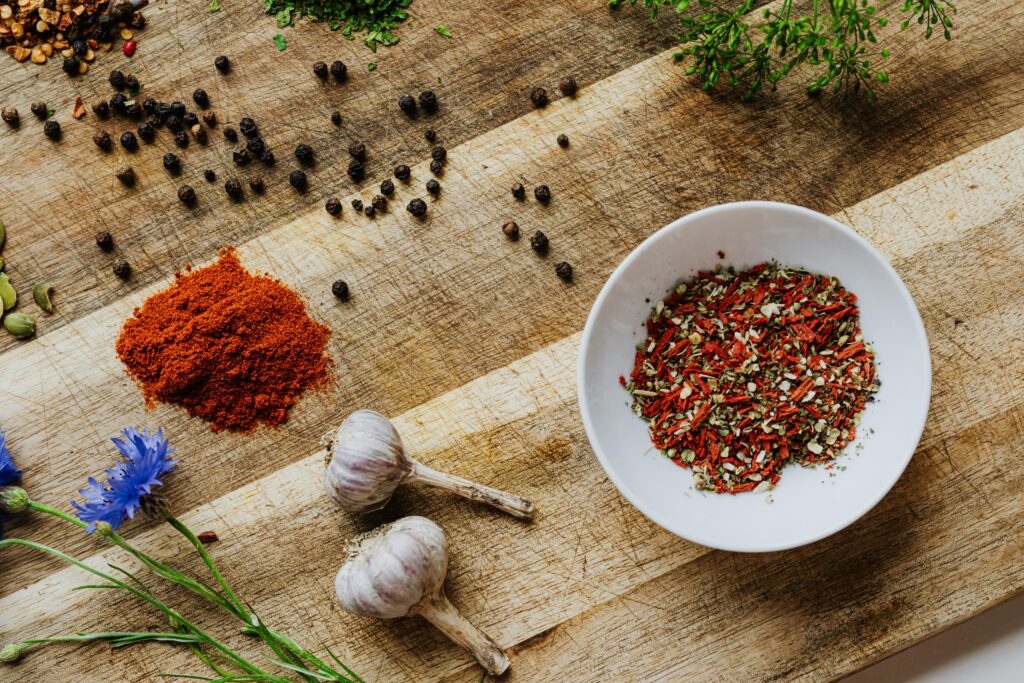Table of Contents
Maize Crop: The Introduction
The maize crop, often called corn, is more than just a staple food; it’s a symbol of sustenance, resilience, and cultural heritage. Originating from Central America, maize has journeyed across continents, becoming a crucial element of global agriculture. Its adaptability and nutritional value make it indispensable to millions of farmers and consumers worldwide. This comprehensive guide will explore every facet of maize cultivation, from its historical roots to modern farming practices, offering valuable insights to enhance your understanding and appreciation of this remarkable crop.
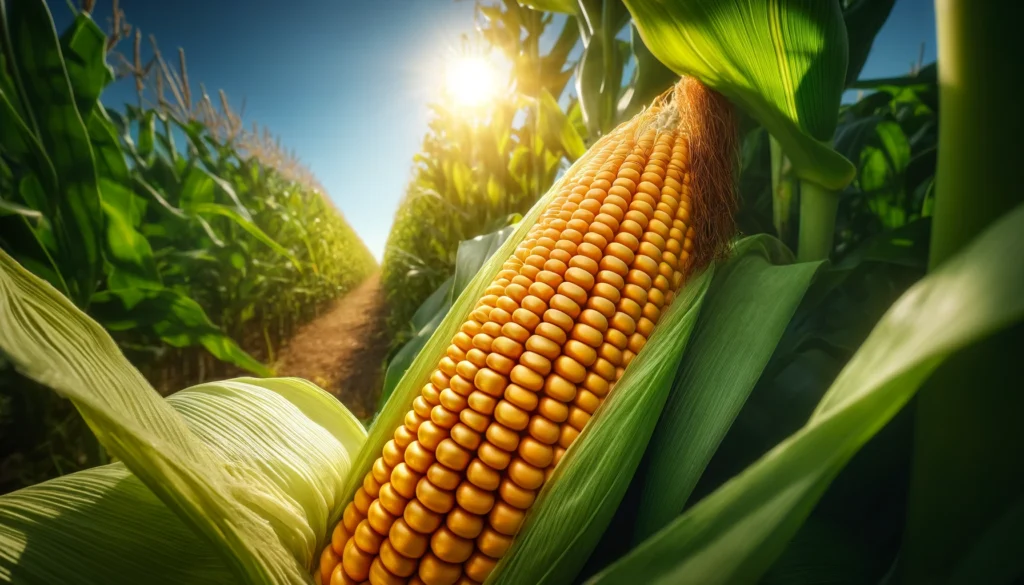
The History and Importance of Maize Crop
Maize has a rich and fascinating history that spans thousands of years. It was first domesticated by indigenous peoples in southern Mexico, who cultivated it from a wild grass known as teosinte. This remarkable crop spread throughout the Americas, becoming a staple food for many civilizations, including the Aztecs and Mayans. European explorers introduced maize to other parts of the world, where it quickly adapted to various climates and terrains.
Today, maize is one of the most widely grown crops on the planet. Its versatility allows it to thrive in diverse environments, from the temperate plains of North America to the tropical regions of Africa and Asia. Maize serves as a primary food source for humans, a vital ingredient in animal feed, and a raw material in numerous industrial products such as ethanol, corn syrup, and biodegradable plastics. Its economic and nutritional significance cannot be overstated, as it supports millions of livelihoods and contributes to global food security.
Optimal Growing Conditions for Maize Crop
Growing maize successfully requires creating the perfect environment for the plants to thrive. Over the years, I’ve learned that paying close attention to climate, soil, and sunlight is crucial for achieving a bountiful harvest.
Climate Requirements
Maize flourishes in warm, temperate climates. The ideal temperature range for maize growth is between 60°F and 95°F. This crop is highly sensitive to frost, and exposure to cold temperatures can damage young plants and reduce yield. Ensuring a frost-free growing season is essential. I’ve seen how vital it is to plant maize when the weather is consistently warm, which helps in strong, early growth.
Soil Preferences
The type of soil used can make a significant difference in the health and yield of maize. Maize prefers well-drained, fertile soils with a pH level between 5.8 and 7.0. Loamy soils, rich in organic matter, provide the best environment for maize, ensuring adequate nutrient availability and proper drainage. Before planting, I always prepare the soil by tilling and incorporating organic matter, such as compost or manure. This preparation enriches the soil, giving the maize the nutrients it needs to grow strong and healthy.
Sunlight
Maize loves the sun. It requires full sunlight for at least six to eight hours a day. Adequate sunlight is essential for photosynthesis, the process by which plants convert light into the energy needed for growth. I’ve found that planting maize in areas with unobstructed access to sunlight leads to robust and vigorous plants. The sight of my maize basking in the sun fills me with a sense of fulfillment, knowing that the plants are getting the energy they need to thrive.
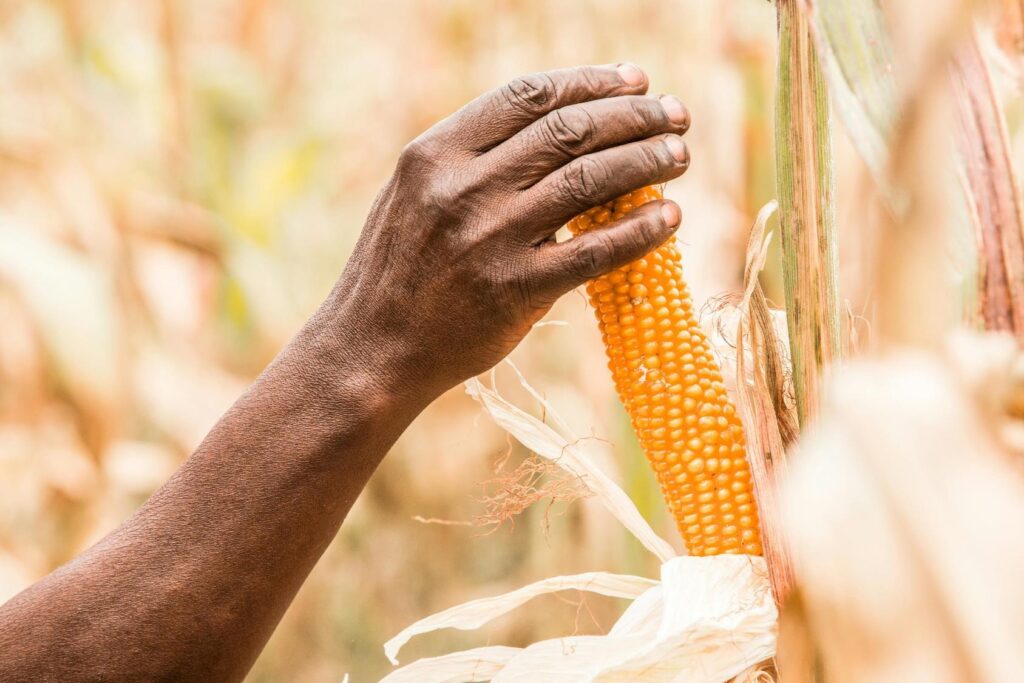
Planting the Maize Crop
Planting the maize crop is an experience filled with hope and anticipation. Each step in the planting process is vital, laying the groundwork for a successful harvest. Based on my experience, here’s a guide to help you grow a thriving maize crop.
Seed Selection: Choosing the Best Varieties
Choosing the right seeds is crucial for a good harvest. The decision depends on your local climate, soil type, and what you plan to use the maize for. Hybrid varieties have always given me higher yields and better resistance to diseases. These seeds are created by cross-breeding different varieties to combine their best traits, resulting in robust plants capable of withstanding environmental stresses. On the other hand, open-pollinated varieties can be replanted each year, making them cost-effective for small-scale farming. They are well-suited to local conditions and help maintain genetic diversity in crops.
Soil Preparation: Setting the Stage
Good soil preparation is essential. Before planting, I always test my soil to check its pH and nutrient levels. This guides me in making necessary adjustments. Tilling the soil to a depth of 6-8 inches improves aeration and root penetration. Incorporating compost or manure during tilling enriches the soil with essential nutrients. Maize thrives in soil with a pH between 5.8 and 7.0. If the soil is too acidic, adding lime helps raise the pH. If it’s too alkaline, using sulfur can lower the pH.
Sowing Techniques: Getting it Right
The method of sowing can make a significant difference. I prefer direct seeding, where seeds are planted directly into the prepared soil. This method is efficient and suitable for large areas, ensuring even spacing and depth. The steps for direct seeding include preparing the soil, calibrating the planter to plant seeds at the correct depth and spacing, planting the seeds evenly, and ensuring adequate moisture for germination.
In regions with shorter growing seasons, I sometimes start seeds indoors and transplant the seedlings to the field. This method extends the growing season and ensures better germination rates. Starting seeds indoors involves using trays with nutrient-rich soil, providing sufficient light and water, and gradually acclimating the seedlings to outdoor conditions before transplanting them into the field.
Planting Depth and Spacing: Crucial Details
The depth and spacing of maize seeds are critical for healthy growth. Planting seeds 1-2 inches deep ensures they have access to moisture while being protected from birds and temperature fluctuations. Spacing the seeds 8-12 inches apart within rows allows each plant room to grow, while maintaining 30-36 inches between rows facilitates air circulation and reduces competition for resources.
Fertilization: Feeding the Young Plants
Maize is a nutrient-hungry crop. Ensuring it gets the necessary nutrients is crucial for its growth. Before planting, I enrich the soil with essential nutrients. Nitrogen is vital for leaf and stalk growth, phosphorus supports root development, and potassium enhances overall plant health and disease resistance. Broadcasting fertilizers evenly over the soil or placing them in bands near the seed rows ensures the young plants get the nutrients they need.
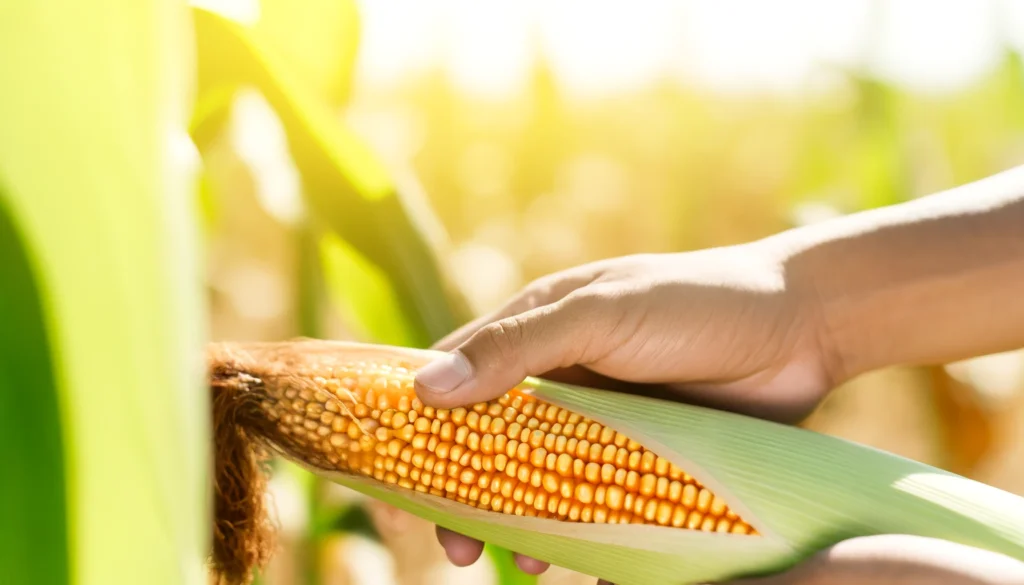
Maize Crop Management
Managing a maize crop involves a blend of science and intuition, a process that demands careful attention to detail to ensure the plants reach their full potential. This stage of cultivation can feel overwhelming, but with experience, it becomes a rewarding endeavor.
Irrigation Practices
Water is life for a maize crop. Ensuring that the maize receives adequate water, especially during critical growth stages like germination, flowering, and grain filling, is paramount. I have found that drip irrigation works best. This method delivers water directly to the roots, reducing waste and promoting healthy growth. It maintains soil moisture without causing waterlogging, which can lead to root diseases. Watching the soil soak up the water, knowing it’s nurturing the plants, fills me with a sense of accomplishment and anticipation.
Fertilization
Maize is a heavy feeder, and getting the fertilization right can make all the difference. Nitrogen is crucial for leaf and stalk growth, phosphorus supports root development, and potassium enhances the plant’s overall health and disease resistance. I start with a balanced fertilizer application at planting and follow up with side-dressings of nitrogen during the growing season. Regular soil testing guides my fertilization schedule, ensuring that the plants receive the right nutrients at the right time. Each step in this process feels like I’m setting the stage for a successful harvest, nurturing the crop to its fullest potential.
Crop Rotation and Intercropping
To keep the soil healthy and reduce pest and disease pressure, I practice crop rotation and intercropping. Rotating maize with legumes, for example, helps replenish soil nitrogen levels, while intercropping with beans or squash can naturally deter pests. These methods not only improve soil fertility but also break the life cycles of pests and diseases, creating a more resilient farming system. Implementing these strategies feels like I’m working in harmony with nature, using its own rhythms to support my crop.
Pest and Disease Management in Maize Crop
Protecting the maize crop from pests and diseases is crucial for a successful harvest. Over the years, I’ve learned that vigilance and early intervention are key.
Integrated Pest Management (IPM)
Maize can fall prey to pests like corn borers, rootworms, and aphids. I use Integrated Pest Management (IPM) strategies to keep these pests at bay. This involves using pest-resistant maize varieties, introducing beneficial insects like ladybugs to control aphids, and implementing crop rotation to disrupt pest life cycles. Regular field inspections allow me to detect and address pest problems early, preventing them from escalating. Seeing my maize plants flourish despite potential threats gives me a profound sense of satisfaction.
Disease Prevention
Diseases such as rust, blight, and smut can severely impact maize crops. To combat these, I select disease-resistant varieties and maintain strict field hygiene. This includes removing crop residues and weeds that can harbor pathogens. When early signs of disease are detected, applying fungicides becomes necessary. However, I prefer to focus on preventive measures, reducing the need for chemical interventions. Each healthy plant is a testament to my efforts and the care I invest in my fields.
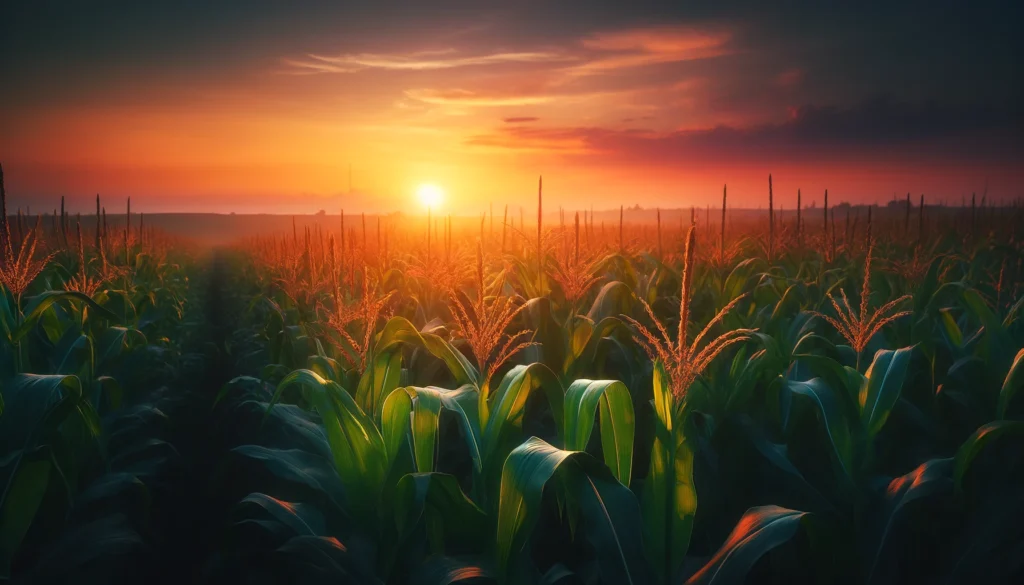
Harvesting the Maize Crop
Harvesting maize is the culmination of months of hard work and care. It’s a moment filled with anticipation and pride, knowing that the effort put into nurturing the crop is about to pay off.
Timing the Harvest
Timing the harvest correctly is crucial. I’ve learned that maize is ready for harvest when the kernels reach physiological maturity, indicated by a black layer at the kernel base. This typically occurs about 20-30 days after silking. The joy of seeing fully matured ears of maize, ready for harvest, is unmatched.
Harvesting Techniques
For large-scale operations, mechanical harvesters are efficient. However, in smaller plots, I often harvest manually. Manual harvesting allows me to carefully select the best ears and ensure the kernels are at the right moisture content, around 20-25%, for optimal storage. The process of harvesting, whether by machine or hand, is a gratifying experience, marking the transition from growth to harvest.
Post-Harvest Handling
Proper post-harvest handling is essential to maintain maize quality. After harvesting, I dry the maize to a moisture content of about 13-15% to prevent mold growth. This can be done using natural sunlight or mechanical dryers. Once dried, I shell the maize, separating the kernels from the cob, and store them in clean, dry bins. Regularly monitoring the stored maize helps ensure it remains in excellent condition. The sight of well-dried, neatly stored maize is a satisfying conclusion to the growing season, providing a sense of security and achievement.
The Nutritional and Economic Value of Maize Crop
Maize is not just a crop; it’s a cornerstone of nutrition and economy in many regions. Its value goes far beyond the fields where it’s grown.
Nutritional Benefits
Maize is a nutritional powerhouse. It provides essential carbohydrates, serving as a primary energy source. When I consume maize, I know I’m getting vital nutrients such as vitamin B6, niacin, and folate, all of which support overall health. Additionally, maize is rich in dietary fiber, which aids digestion and helps maintain stable blood sugar levels. Growing and consuming maize feels like I’m contributing to my own health and the well-being of my community.
Economic Significance
Economically, maize is a lifeline. For me and many other farmers, it’s a reliable source of income. Its versatility means it’s always in demand, whether for human consumption, animal feed, or industrial products like ethanol and biodegradable plastics. The revenue from maize sales supports families, improves living standards, and drives local economies. Each successful harvest not only provides financial stability but also contributes to the broader economic health of the community.
Global Food Security
Maize plays a crucial role in global food security. In many developing countries, it serves as a staple food, ensuring millions have access to necessary nutrition. The importance of maize in preventing hunger and malnutrition cannot be overstated. Growing maize, I feel part of a larger mission to nourish and sustain lives, making a meaningful impact on the world.
Innovations and Future Trends in Maize Cultivation
The future of maize cultivation is exciting, driven by innovations and sustainable practices. These advancements promise to make farming more efficient and environmentally friendly.
Precision Farming
Technological advancements like precision farming have revolutionized how I approach maize farming. Using GPS-guided machinery, I can plant, fertilize, and irrigate my crops with pinpoint accuracy. This maximizes efficiency and reduces waste. Precision farming helps me optimize input use, leading to better yields and lower costs. Embracing these technologies feels like stepping into the future of agriculture.
Genetically Modified Organisms (GMOs)
GMO maize varieties are designed to withstand pests, diseases, and adverse weather conditions. These traits have been a game-changer, allowing me to achieve more consistent and reliable harvests. However, I stay informed about consumer preferences and regulatory environments regarding GMOs to align my practices with market demands and ethical considerations. Using GMOs, I feel equipped to tackle the challenges of modern farming.
Sustainable Practices
Sustainability is at the heart of future trends in maize cultivation. Practices like conservation tillage, cover cropping, and organic farming are gaining traction. By adopting these methods, I can improve soil health, reduce erosion, and enhance biodiversity on my farm. These sustainable practices benefit the environment and ensure the long-term productivity and resilience of my maize crop. Embracing sustainability, I feel I’m contributing to a healthier planet while securing the future of my farm.
Digital Tools and Data Analytics
The integration of digital tools and data analytics promises to revolutionize maize farming further. Access to real-time data on weather, soil conditions, and crop health enables me to make informed decisions quickly, adapting to changes and challenges as they arise. Utilizing these innovations ensures my maize cultivation remains efficient, sustainable, and profitable for years to come. It’s an exciting time to be a maize farmer, with technology and tradition working hand in hand.
Also learn how to grow potatoes and be self sufficient in food.
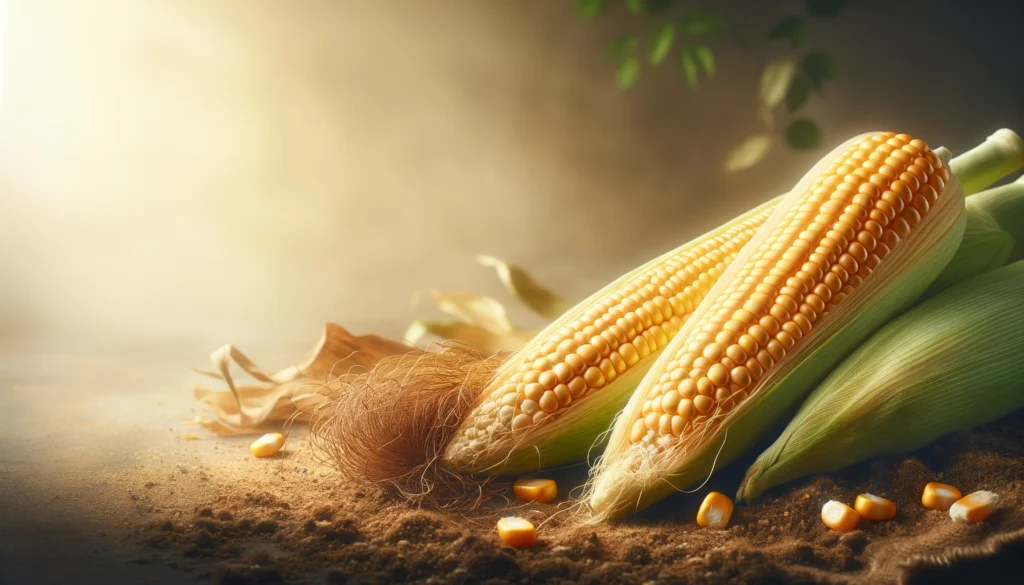
Maize Crop: The Conclusion
The maize crop is a testament to human ingenuity and agricultural advancement. Its journey from ancient civilizations to modern farms highlights its importance as a staple food and a vital economic resource. Understanding the complexities of maize cultivation, from selecting the right seeds to implementing effective pest management strategies, can significantly enhance crop productivity and sustainability. As we move forward, embracing technological innovations and sustainable practices will be key to ensuring the continued success and resilience of maize cultivation worldwide.
Frequently Asked Questions
What is the best time to plant maize?
The best time to plant maize is during the spring, after the last frost has passed. This ensures the seeds germinate in warm soil, promoting healthy growth. In tropical regions, maize can be planted throughout the year, provided the soil conditions are favorable.
How much water does a maize crop need?
Maize requires approximately 500-800 mm of water during its growing season. The critical stages for irrigation are during germination, flowering, and grain filling. Drip or sprinkler irrigation systems are recommended for efficient water use, ensuring consistent moisture levels without waterlogging.
What are the common pests affecting maize crops?
Common pests include corn borers, rootworms, aphids, and armyworms. Implementing Integrated Pest Management (IPM) strategies, such as using resistant varieties, biological controls, and crop rotation, can effectively manage these pests and minimize damage to the crop.
How can I improve soil fertility for maize cultivation?
Improving soil fertility involves adding organic matter like compost or manure, practicing crop rotation, and using balanced fertilizers. Regular soil testing can help determine nutrient deficiencies and guide appropriate fertilization practices. Maintaining soil health is crucial for sustainable maize production.
What are the nutritional benefits of maize?
Maize is rich in carbohydrates, providing a significant energy source. It also contains essential vitamins (such as vitamin B and folate), minerals (including magnesium and potassium), and dietary fiber, supporting overall health and nutrition. Maize is a versatile ingredient that can be used in various culinary dishes.
What are the key steps in post-harvest handling of maize?
Proper post-harvest handling is crucial to maintain maize quality. Key steps include drying the maize to a moisture content of around 13-15%, shelling the kernels from the cob, and storing the maize in clean, dry facilities. Regular monitoring of stored maize is important to detect any signs of spoilage or pest infestations.
How do I choose the right maize variety for my farm?
Selecting the right maize variety depends on several factors, including your climate, soil type, and intended use. Hybrid varieties are often preferred for their improved yield potential, disease resistance, and uniform growth characteristics. Consulting with local agricultural experts can help you make an informed decision.
What are the benefits of using hybrid maize seeds?
Hybrid maize seeds offer several advantages, including higher yield potential, improved resistance to pests and diseases, and better adaptability to various environmental conditions. These benefits can lead to more consistent and productive harvests, enhancing overall farm profitability.
How can I protect my maize crop from diseases?
Preventive measures include selecting disease-resistant maize varieties, maintaining proper field sanitation, and applying fungicides when necessary. Regular scouting and early detection are crucial to manage disease outbreaks effectively. Implementing crop rotation can also reduce the incidence of soil-borne diseases.
What role does maize play in animal feed?
Maize is a major component of animal feed, providing a high-energy source for livestock such as cattle, poultry, and swine. Its nutritional content, particularly its carbohydrate and protein levels, makes it an ideal ingredient for balanced animal diets. The use of maize in animal feed supports the livestock industry and contributes to global food production.

